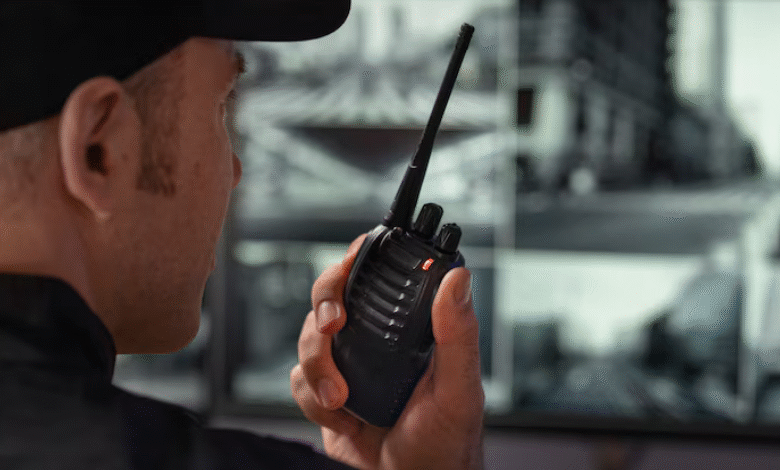Why is Niles Ohio Police Still on Analog Radios

Imagine this: it’s 2023, and while most of us are streaming music on smartphones or chatting via encrypted apps, the Niles, Ohio Police Department is still using analog radios to keep the city safe. In a world of cutting-edge tech, why hasn’t this small-town police force upgraded to digital systems like so many others? The answer lies in a mix of practicality, budget realities, and a system that despite its age still gets the job done.
In this article, we’ll dive deep into why Niles, Ohio’s police stick with analog radios. We’ll explore the history of police communication, break down the differences between analog and digital systems, and uncover the unique factors keeping Niles rooted in the past. Plus, we’ll look at what this choice means for the community and what the future might hold. Grab a coffee, and let’s get started!
A Quick Intro to Police Radios
Police radios are the lifeline of law enforcement. Whether it’s a high-speed chase, a missing person report, or a routine traffic stop, officers rely on these devices to stay connected with dispatch and each other. Over the decades, radio technology has evolved from clunky one-way systems to sleek digital networks. Yet, not every police department has jumped on the digital bandwagon. In Niles, Ohio, analog radios remain the tool of choice a decision that might seem outdated but makes sense when you dig into the details.
So, why does a small city like Niles stick with analog when bigger departments have gone digital? Let’s explore the journey of police radios, the pros and cons of each system, and what’s keeping Niles tuned to the old frequency.
How Did We Get Here? The History of Police Radios
To understand why Niles, Ohio, still uses analog radios, we need to rewind the clock. Police communication wasn’t always as instant as it is today. In fact, it started with some pretty basic setups.
The Early Days
-
1920s: The first police radios hit the scene. In 1928, Detroit rolled out a one-way system think of it like a radio station for cops. Dispatchers could broadcast updates, but officers couldn’t talk back.
-
1933: Bayonne, New Jersey, changed the game with two-way radios. Suddenly, officers could report in, ask for backup, or coordinate on the fly.
-
1930s-1940s: Analog radios became the standard. They used continuous sound waves to carry voices, and while they weren’t perfect (hello, static!), they were reliable and affordable.
For years, analog radios ruled the airwaves. They were simple, tough, and didn’t break the bank perfect for police departments big and small.
The Digital Revolution
Fast forward to the late 20th century, and digital radios started popping up. By the 1990s, agencies began swapping analog for digital systems that turned voices into binary code. Why? Better sound, tighter security, and the ability to send data like GPS coordinates. It was a game-changer but not every department could afford the ticket to ride.
Today, while many police forces have gone digital, places like Niles, Ohio, are still rocking the analog vibe. To figure out why, let’s compare the two systems side by side.
Analog vs. Digital: What’s the Difference?
Analog and digital radios might both get voices from point A to point B, but they do it in totally different ways. Here’s the lowdown:
Analog Radios
-
How They Work: Picture a smooth wave carrying your voice through the air. That’s analog continuous, simple, and old-school.
-
Pros:
-
Cheap: Less expensive to buy and fix.
-
Easy: No fancy tech skills needed to keep them running.
-
Works with Others: They play nice with older systems, which is key when backup arrives from another town.
-
-
Cons:
-
Noise: Ever hear static on an old radio? That’s analog’s downside interference can muddy the message.
-
Security: Anyone with a scanner can eavesdrop.
-
Digital Radios
-
How They Work: Your voice gets chopped into 1s and 0s, sent over the air, and pieced back together. High-tech, right?
-
Pros:
-
Crystal Clear: Less static, more clarity.
-
Locked Down: Encryption keeps prying ears out.
-
Extra Perks: Send texts, share locations digital does more than just talk.
-
-
Cons:
-
Pricey: New gear, new infrastructure, new training it adds up.
-
Tricky: More complex to set up and maintain.
-
Comparison Table: Analog vs. Digital Radios
Here’s a quick look at how they stack up:
|
Feature |
Analog Radios |
Digital Radios |
|---|---|---|
|
Signal Style |
Continuous wave |
Binary code |
|
Sound Quality |
Can get fuzzy |
Sharp and clear |
|
Security |
Easy to listen in |
Encryption available |
|
Cost |
Budget-friendly |
Big investment |
|
Ease of Use |
Simple and straightforward |
Needs more know-how |
|
Bonus Features |
Just voice |
Voice plus data |
This table sums it up: analog is the reliable old friend, while digital is the flashy new kid. So why doesn’t everyone switch? Let’s find out.
Why Some Police Departments Stay Analog
Not every police department is ready to ditch analog radios, and there are some solid reasons why. It’s not just about nostalgia practicality plays a huge role.
Money Talks
-
Tight Budgets: Upgrading to digital isn’t cheap. New radios, towers, and training can cost hundreds of thousands or millions for bigger departments. Small towns like Niles often can’t swing it.
-
Low Maintenance: Analog systems are like that old truck that keeps running repairs are simple and don’t drain the bank.
Playing Nice with Others
-
Teamwork: During emergencies, police often work with nearby agencies. If those neighbors are still on analog, switching to digital could mean communication breakdowns.
-
Backup Plan: Some departments keep analog as a fallback. If digital fails (think power outages or tech glitches), analog keeps the lines open.
Coverage Counts
-
Signal Strength: In rural spots or tricky terrain, analog can sometimes outshine digital. It’s less picky about where it works.
-
No Gaps: For a small city like Niles, analog might cover every corner without needing fancy upgrades.
Comfort Zone
-
No Learning Curve: Officers know analog inside and out no need to retrain the team.
-
Good Enough: If it ain’t broke, why fix it? For some, analog does the job just fine.
These reasons explain why analog lingers in police stations across the country. But what about Niles, Ohio, specifically? Let’s zoom in.
Zooming In: Niles, Ohio’s Story
Niles, Ohio, is a cozy city of about 18,000 people, tucked in Trumbull County. With a police force of roughly 35 officers covering 8.5 square miles, it’s not a sprawling metropolis. That size and the realities that come with it shapes why Niles Police Department sticks with analog radios.
Cash Crunch
-
Small Budget: Niles isn’t rolling in dough. A full digital overhaul could cost more than the department can spare, especially when you factor in new gear and training.
-
Other Priorities: Money might be better spent on hiring officers, fixing patrol cars, or keeping the community safe in other ways.
Keeping It Local
-
Good Coverage: Niles isn’t a huge area, and analog radios likely reach every street without issue. No need for a high-tech fix when the basics work.
-
Neighborly Ties: Nearby towns or counties might also use analog. Staying on the same wavelength keeps everyone in sync during joint operations.
Community Connection
-
Scanner Fans: Analog radios let locals tune in with scanners. For some, like retirees or news buffs, it’s a way to stay in the loop and feel secure.
-
Open Lines: In a tight-knit place like Niles, hearing police chatter can build trust between the force and the folks they protect.
Niles Police at a Glance
Here’s a snapshot of the department:
|
Detail |
Info |
|---|---|
|
Population |
~18,000 |
|
Officers |
~35, split across 3 shifts |
|
Area Covered |
8.5 square miles |
|
Radio Type |
Analog |
|
Dispatch Center |
Niles Safety Service Complex |
|
Budget Vibe |
Stretched thin, focuses on essentials |
This table paints the picture: Niles is a small, practical operation where analog radios fit the bill. But what happens if they want to upgrade?
The Hurdles of Going Digital
Switching to digital sounds cool clearer calls, secret codes, and all that jazz. But for Niles, it’s not as simple as flipping a switch. Here’s what’s standing in the way.
The Price Tag
-
Upfront Costs: New radios can run $500 to $1,000 each, and that’s before you add towers, repeaters, and installation. For 35 officers, that’s a big chunk of change.
-
Long Haul: Digital systems need regular updates and tech support more expenses down the road.
Tech Troubles
-
Coverage Risks: Digital signals can drop in weird spots like dense buildings or hilly areas. Niles might not have those issues, but it’s a worry.
-
Setup Hassles: Going digital means rewiring the whole communication setup. That’s time and expertise Niles might not have on hand.
Security vs. Openness
-
Locked Out: Digital encryption keeps criminals from listening in, but it also shuts out the public. In a community that likes transparency, that’s a trade-off.
-
New Threats: Digital means cybersecurity risks hacks or glitches could silence the system.
People Problems
-
Training Time: Officers and dispatchers would need to learn the new tech. That’s hours away from patrolling or responding to calls.
-
Pushback: Change isn’t everyone’s friend. Some might grumble about ditching a system they’ve mastered.
For Niles, these hurdles might outweigh the perks of going digital at least for now. But what about the bigger picture?
What’s Next for Police Communication?
Police radios aren’t stuck in the past forever. Technology keeps marching forward, and departments like Niles will face choices about where to go next.
Cool New Tech
-
Mix and Match: Hybrid systems blend analog and digital, giving flexibility without a full overhaul.
-
Smart Stuff: “Software-defined radios” can flip between modes, offering a future-proof option.
-
Data Boom: Digital could bring maps, texts, or live updates right to an officer’s radio.
Money Moves
-
Grant Lifelines: Federal or state funding could make digital doable. Other small departments have scored cash to upgrade Niles could too.
-
Worth It?: Leaders will weigh costs against benefits like better sound or tighter security.
Balancing Act
-
Public Ear: Some places are pushing laws to keep police chatter public, even on digital systems. Think delayed broadcasts security meets openness.
-
Trust Factor: Communities like Niles might want to hear what’s up, not just rely on press releases.
The future’s a mix of old and new. Analog won’t vanish overnight, but as money and tech align, Niles might tune into something fresh.
FAQ: Your Questions Answered
Got questions? Here are some answers about Niles, Ohio, and analog radios.
Why are Niles, Ohio police still using analog radios?
-
They’re cost-effective, reliable, and work with nearby agencies. For a small city, that’s enough.
What’s stopping Niles from switching to digital radios?
-
Money’s tight, the current system works, and upgrading’s a hassle think training and tech tweaks.
Can the public still hear Niles police on scanners?
-
Yep! Analog radios are open to anyone with a scanner, unlike encrypted digital ones.
Are analog radios less safe for police?
-
They’re easier to eavesdrop on, but for routine calls in a small town, that’s not a huge deal.
Will Niles ever go digital?
-
Maybe! If funding comes through or needs change, they might make the leap.
Wrapping It Up
Niles, Ohio’s police sticking with analog radios isn’t about being stuck in the past it’s about what works. With a tight budget, a small area to cover, and a community that values staying connected, analog keeps things humming. Sure, digital offers fancy perks, but the costs and challenges make it a tough sell for now.



